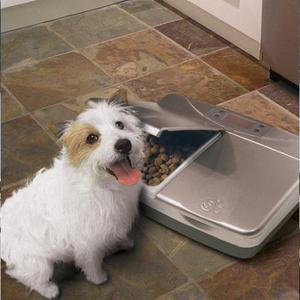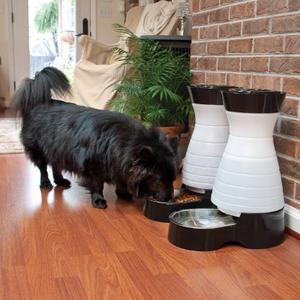What Are Thyroid Glands and Hypothyroidism?
The thyroid glands are a pair of small glands located in the neck of animals and people. They produce hormones that help maintain a normal metabolic rate. In some dogs the thyroid glands will become inactive and stop producing thyroid hormone. The cause of hypothyroidism is often a result of the immune system attacking the thyroid gland over time. The underlying cause of this attack is not completely understood. Eventually the gland is destroyed and is unable to produce thyroid hormones, resulting in the symptoms below.
Which Dogs Get Hypothyroidism?
Symptoms of hypothyroidism typically show up during middle age, 2 - 7 years of age. Any breed of dog can develop hypothyroidism, but some breeds are somewhat more likely, including Doberman Pinschers, Golden Retrievers, and Cocker Spaniels.

- Weight gain
- Lethargy
- Inactivity
- Hair & coat changes
- Weakness
Hair and coat changes can include hair loss, dry brittle coat, and skin infections. Hair loss and coat changes are often evenly distributed on both sides and typically are not itchy or bothersome to your pet. Some dogs will seek out warm areas and avoid cold. More serious symptoms are rare but could include brain or nerve symptoms such as wobbliness, circling, seizures, or drooping of the face.
It’s important to remember that pets can gain weight from too much food and too little exercise, just like people, and being overweight alone does not necessarily mean your dog has a low thyroid level. If increased exercise and a weight loss diet don’t help your dog lose weight, hypothyroidism might be a consideration.
Diagnosis
Hypothyroidism is diagnosed using blood tests to measure the level of thyroid hormone produced by the gland (total T4 and free T4) and the hormones that normally stimulate the gland (thyroid stimulating hormone – TSH). If the hormone levels have a specific pattern (low T4, low free T4, and high TSH), a diagnosis can be made on a single blood sample. In some cases, if the levels do not fit the classic pattern but the symptoms fit, bloodwork will be repeated several months later to see if the thyroid hormone levels are changing. Cost of the initial diagnosis ranges between $100-500.
Treatment
You’ll give your pet a pill to control hypothyroidism 1-2 times a day for the rest of your dog’s life. The medication replaces the natural thyroid hormones with synthetic hormone and works best if it’s given on an empty stomach, at least 1 hour before eating. If the diagnosis is correct, dogs with hypothyroidism will have more energy and feel better. They’ll lose weight, and the hair loss and skin changes will also slowly improve over a few months.
Side Effects
-
 Increased thirst and urination
Increased thirst and urination - Excessive weight loss
- Hyperactivity
Side effects are uncommon and typically occur if the dose of the medication is too high. Side effects go away quickly when the dose of medication is decreased.
Once the medication is started, your veterinarian will recheck thyroid levels 2-4 weeks later. Be sure to give the medication the morning of the recheck blood levels. Blood levels should be drawn 4-6 hours after the morning medication is given. Your veterinarian will adjust the drug dosages and continue to monitor until the thyroid levels are stable. Some dogs will eventually be able to be maintained on once daily medication once their symptoms have improved.
Cost of treatment ranges from $10-50/month depending on the size of your dog and frequency of medication. The cost of monitoring varies from $100-300 as often as every month in the beginning stages of treatment. After your pet is stable on the medication, monitoring may be as little as once yearly. Keep in mind that these costs will continue for the remainder of your pet’s life.
Prognosis
Dogs with hypothyroidism can live a normal and happy life if the disease is treated appropriately. The disease does require lifelong treatment with medication. If you notice symptoms of hypothyroidism, call your veterinarian. But remember that diet and exercise are important to maintaining a healthy weight in dogs, and not every overweight dog has hypothyroidism.




